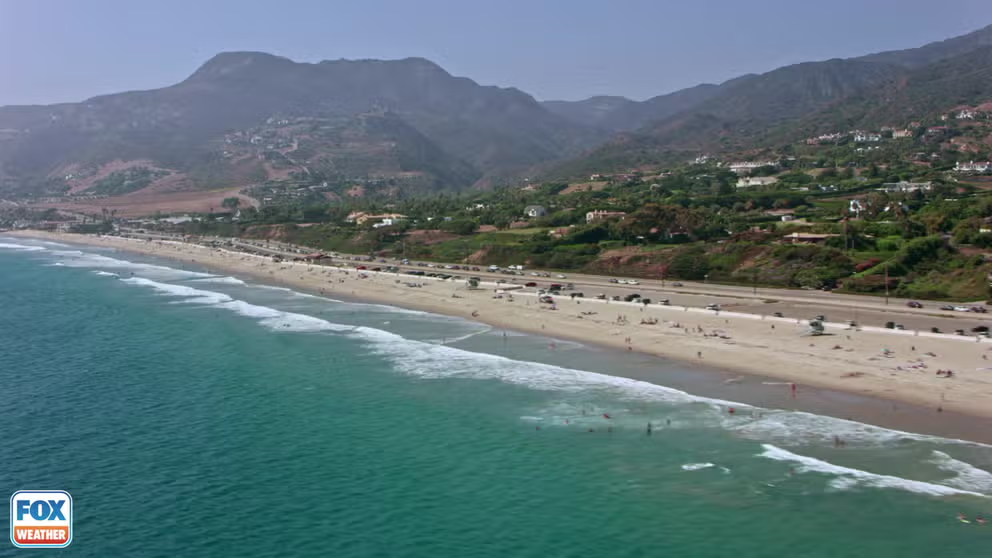The reason California beach surf is so much chillier than Atlantic, Gulf Coast waters
Taking a summer dip in the ocean along California beaches is an entirely different experience than for those along the Gulf and Atlantic coasts, where water temperatures run 10 to 20 degrees warmer.
Why hurricanes don't strike California
Learn why hurricanes are exceedingly rare along the California coast, despite a warm, oceanfront climate.
LOS ANGELES – It's a warm summer day along the Gulf Coast or southeastern Atlantic Seaboard. You head out to the many beaches and take a dip in the ocean to find it comfortably warm. Water temperatures are in the 70s or even 80s, and you feel like you can spend an entire afternoon in the surf.
Meanwhile, it's a warm summer day along the Southern California coast. You head out to the many beaches and take a dip in the ocean to find … it's a bit chilly! Water temperatures are in the mid- to upper 60s. Depending on your heartiness, it's a much shorter dip in the waters than your East Coast beachgoers before returning to the sand to warm up. It's why most California surfers will wear a wetsuit.
Both areas feature southern, tropical climates that seem endlessly warm, yet water temperatures are 10 to 20 degrees different. How can that be?
Prevailing winds steal California's warm waters
From the late spring into summer, the prevailing weather pattern will feature a ridge of high pressure anchored off the Pacific coast.
The result: A consistent northerly wind that pushes warm, sun-kissed waters south along the coast. But the spin from Earth's rotation causes an effect known as the Coriolis force that will bend that south-flowing water out to the west, pulling it away from the coastline.
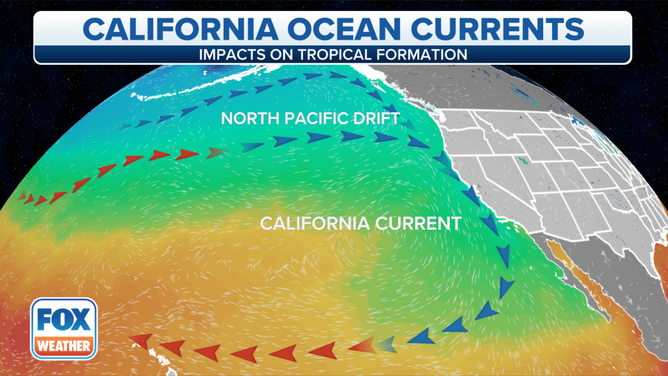
An illustration of the California current.
(FOX Weather)
The process will then pull deeper, much cooler water from the sun-starved depths of the Pacific toward the surface, dropping water temperatures. It's a process known as "upwelling," which plays out along the entire U.S. Pacific coast.
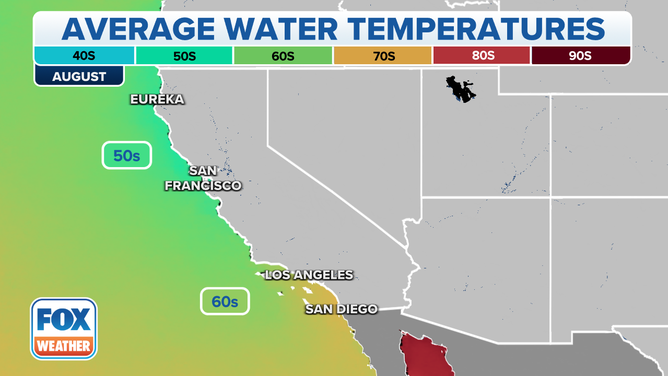
Average August sea surface temperatures along West Coast
(FOX Weather)
Upwelling explains why water temperatures along California, Oregon and Washington beaches are much cooler than similar-latitude beaches in the East.
Meanwhile, warm water currents feed the Gulf, Atlantic coasts
On the other hand, moving water contributes to warming temperatures along the Gulf and Atlantic coasts.
THE TOP 10 SECRET BEACHES IN THE U.S.
In the Gulf of Mexico, warm waters from the Caribbean Sea – much farther south and in an even warmer climate – are fed into the Gulf of Mexico via the Loop Current.
The current will boost water temperatures well into the 80s during the late summer and early autumn, with some offshore buoys even measuring temperatures in the lower 90s.
Meanwhile, on the Atlantic side of the U.S., the Florida and Gulf Stream currents carry warm waters from the Caribbean Sea up north along Florida's coast and then right around the curve of the southeastern Atlantic coast before turning out to sea around Cape Hatteras, North Carolina.
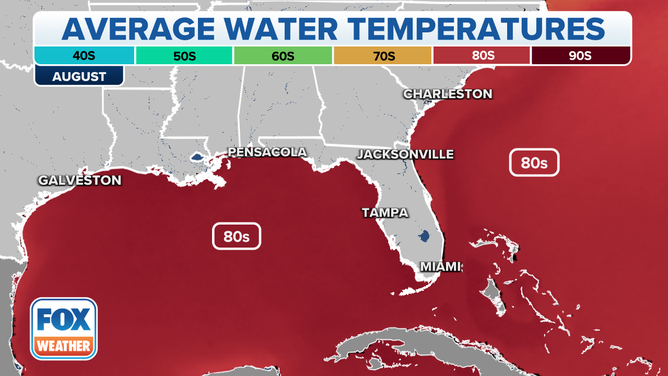
Average Sea Surface Temps on the Gulf Coast.
(FOX Weather)
Average summer water temperatures off the coast of Charleston, South Carolina, are in the lower 80s, about 15 degrees warmer than Los Angeles' ocean waters despite being at similar latitudes.
Hurricanes love the Atlantic, hate the Pacific
These vast differences in water temperatures explain why hurricanes and tropical storms are a yearly danger along the East and Gulf coasts yet are unheard of in the West.
WHY DON'T TROPICAL STORMS AND HURRICANES HIT CALIFORNIA?
Tropical systems get their fuel from warm ocean waters that need to be at least 80 degrees to power significant storms. Those conditions are easily reached off the East and Gulf coasts but never reached along the U.S. West Coast. (However, they are reached farther south along Mexico's western coastline.)
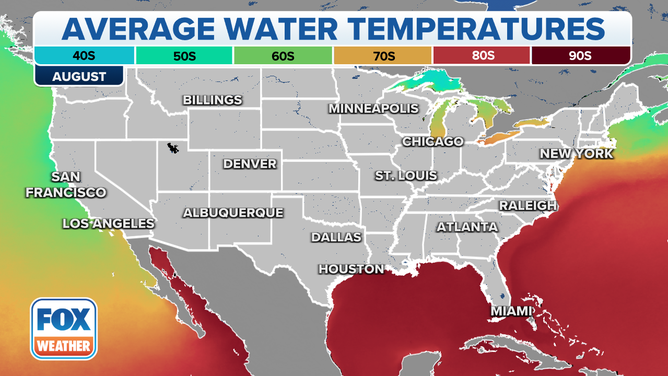
Average Sea Surface Temperatures in August
(FOX Weather)
That said, there have been two recorded instances of tropical systems reaching Southern California over the last two centuries.
Why do ocean waters get even warmer into the late summer?
As toasty as a swim might be in the East in June or July, water temperatures warm even more as you get into late August and September, even though peak solar heating occurs at the summer solstice in late June.
That's due to water taking a longer time to heat from the sun. When you turn on a pot of water to boil, the process isn't instant; it takes a bit of time for the water to absorb the heat.
The same goes for the ocean: It takes longer for ocean waters to warm from increased sunshine than it does for air, though the atmosphere takes some time too.
THESE ARE THE MOST DANGEROUS BEACHES IN AMERICA
The peak heating for summer temperatures is typically in late July but can be four to six weeks later for ocean temperatures.
Suffice to say, if spending hours in warm ocean waters is your dream summer vacation, book a flight to the East instead of the West.
